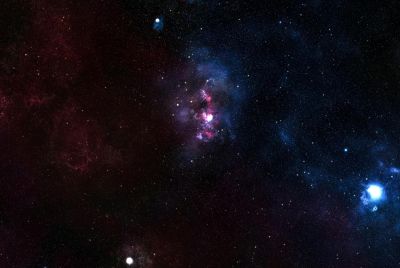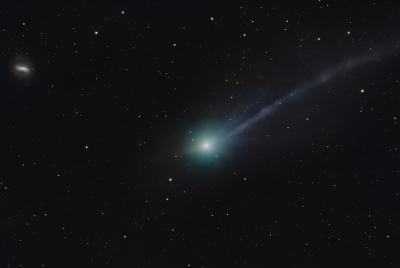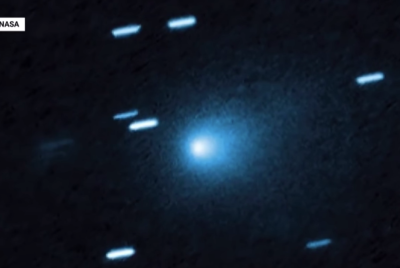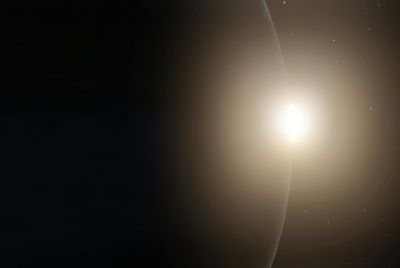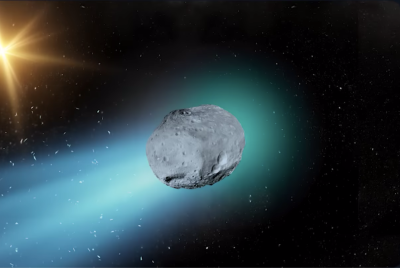3I/Atlas Interstellar Comet is 'Alien': All You Need to Know
Experts say 3I/Atlas looks unusual but matches natural comet behaviour from deep space

The interstellar comet 3I/Atlas has captured global attention as it moves across the Solar System. Its unusual chemistry and ancient origin have fuelled speculation about alien involvement. Scientists are now emphasising that the visitor behaves exactly like a natural comet, even though it is far stranger than anything seen nearby.
Scientists Reject Claims of an Alien Probe
Reports circulated online that 3I/Atlas could be breaking apart or emitting radio signals. These suggestions appeared widely on social media, yet astronomers say none of the claims match the evidence. Experts told Science Alert that everything observed so far is consistent with a comet from another star system and nothing indicates artificial origins.
The rumours intensified after Harvard scientist Avi Loeb publicly discussed the possibility of alien technology. His commentary created strong public interest, although specialists note that his arguments have been widely challenged. Jason Wright of Penn State rebutted the claims in detail, explaining that the comet's behaviour can be fully explained through its chemistry, its structure and its long journey through space.
A Comet With Highly Unusual Chemistry
What makes 3I/Atlas stand out is its composition. Telescope observations show that it carries an unusually high concentration of nickel. It also contains more carbon dioxide than typical comets and far fewer carbon-chain molecules. These features suggest that the comet formed in a very different type of planetary system.
Scientists believe that 3I/Atlas spent billions of years travelling through deep space. This long exposure to cosmic rays has made its surface extremely red and dusty. Its high speed supports the idea that the object originated in a distant stellar disk before being ejected into interstellar space.
Researchers estimate that the comet may be roughly 11 billion years old based on early modelling. This makes it significantly older than most objects studied in the Solar System, which contributes to its distinct characteristics.
NASA Data Shows a Fast and Distant Flyby
The object was first detected on 1 July 2025 by the Asteroid Terrestrial-Impact Last Alert System in Chile. NASA confirmed that sightings may extend back to mid-June. The comet became known as 3I because it is the third identified interstellar object to enter the Solar System. The first was 1I/'Oumuamua in 2017, followed by 2I/Borisov in 2019.
NASA data shows that 3I/Atlas is travelling at 137,000 miles per hour. It passed near Mars in October and will fly by Earth on or around 19 December at a distance of roughly 170 million miles. Experts told CBS News that it poses no threat, since the flyby takes place on the far side of the Solar System. The event gives astronomers a rare opportunity to track a pristine object from beyond the Sun's neighbourhood.
Why Scientists are Excited About 3I/Atlas
Although alien rumours attract attention, researchers say the comet's natural features are far more interesting. Its unusual chemistry could reveal how planetary systems formed around ancient stars. Its deep-space age and extreme colouring provide clues about how cosmic rays shape icy bodies over long periods.
There is also potential for new observations as the comet moves closer to Jupiter in March 2026. Scientists hope that NASA's Juno spacecraft may be able to collect additional data during the encounter. Any new information will help build a clearer understanding of how interstellar objects evolve as they pass near the Sun.
3I/Atlas will eventually leave the Solar System and continue its journey into deep space. Astronomers say it may be many decades before another interstellar object of this quality becomes visible. The comet presents a rare opportunity to study material from another star, and researchers believe the discovery will enhance our understanding of how planetary systems form and evolve over time.
© Copyright IBTimes 2025. All rights reserved.







